Chiles are a fundamental ingredient in Mexican cuisine, infusing traditional dishes with different flavors, complexity, depth, and spiciness.
Thanks to Mexico’s varied climate and geography, nearly 40 chile pepper varieties can be grown throughout the country, without altering the chile’s flavor or spiciness.
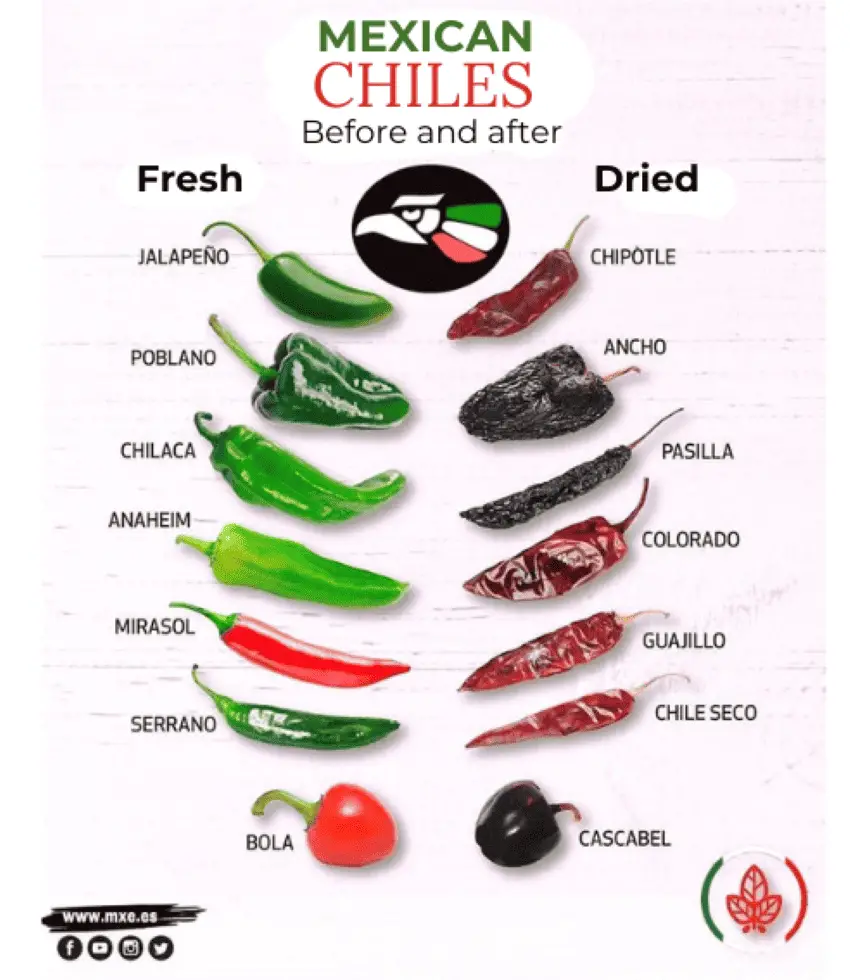
With so many varieties, it is no wonder that the average Mexican consumes 18 kg of chile per year, and that the country is amongst the top 3 chile producers in the world.
A brief history of chile
When ancient civilizations in what is now Mexico discovered that wild chile peppers were edible, they began selectively cultivating them, developing various types with different flavors and levels of spiciness.
In Mexico, the oldest evidence of chile seeds in human settlements is in the Coxatlán cave in the Tehuacán region of Puebla. Likewise, the Guilá Naquitz site, near Mitla in southern Oaxaca, provides evidence of early chile domestication.
In his “General History of the Things of New Spain” Fray Bernardino de Sahagún wrote about different types of chile peppers and the dishes in which they were used. He also reported on the use of chile peppers to treat certain mouth diseases.
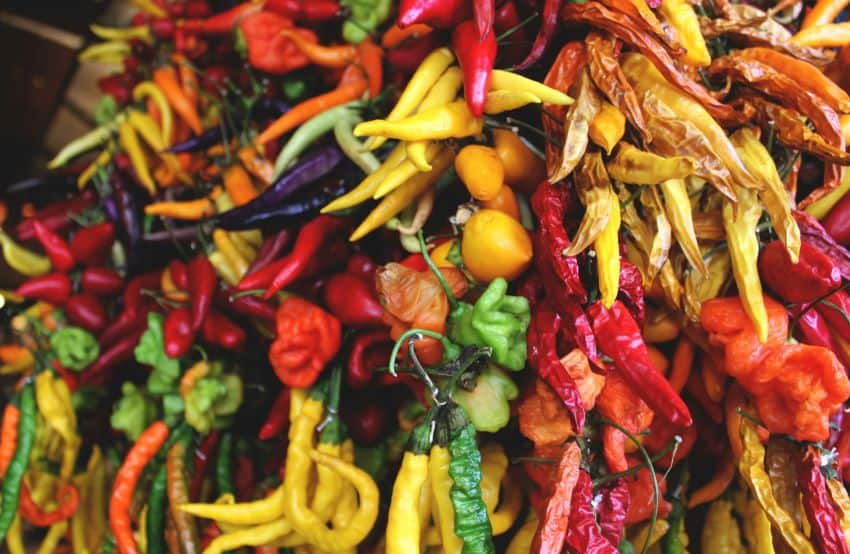
Over time, chile peppers became a popular seasoning for meats brought from Spain, like beef and pork and were combined with other native and foreign spices to recreate traditional dishes like the mole sauce.
The spiciness of chiles
A chile’s level of spiciness depends on the amount of capsaicin, its main compound. For example, the habanero has the highest percentage of capsaicin of all Mexican chiles, while the poblano chile has the least.
Whether fresh, dried, raw or cooked, the type of chile pepper you use depends on the desired dish and level of spiciness, so it is crucial to know which ones are best suited for your recipe.
To help you pick the right chile pepper for your dish, we have put together a list of the most commonly used types of chile peppers in Mexican cuisine, divided into fresh and dried chiles. The list includes information on the usage, spice level and recipe examples.
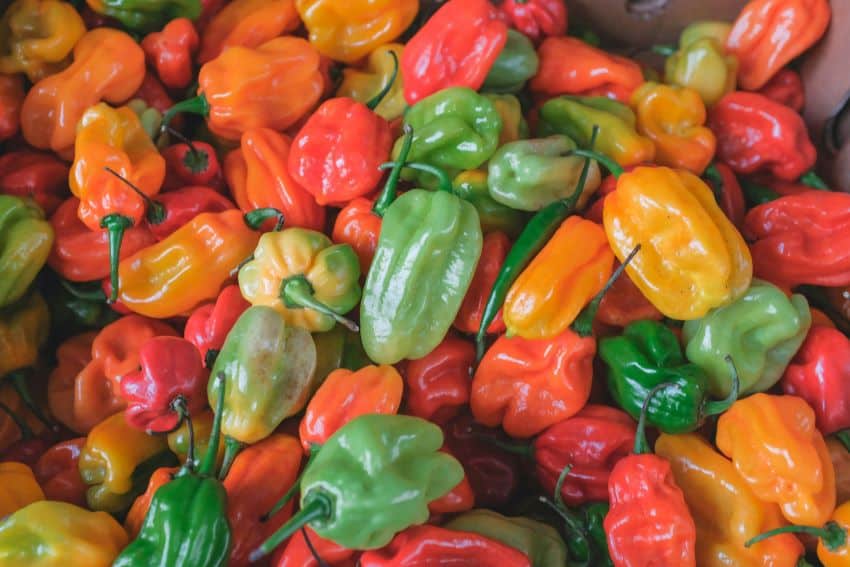
Fresh chiles
Poblano: The chile poblano is the largest type of chile consumed in Mexico. It is dark green in color and has a size similar to that of a large pepper. It’s ideal for use in soups and sauces or as a garnish.
Among the dishes that use poblano are pollo con rajas (chicken stew topped with slices of poblano), chile poblano soup, and of course, chile en nogada, one of the most iconic dishes in Mexican cuisine.
Spiciness: 🌶️
Jalapeño: About four inches long, the jalapeño is one of the most recognizable Mexican chiles. Its color changes from bright green to red once it is ripe. Some say the chile’s name comes from La Xalapeña, a food packaging company in Veracruz that popularized pickled chiles in Mexico, now the most common way to eat jalapeños.
In the United States, the jalapeño is used as an appetizer stuffed with cheese and fried.
Spiciness: 🌶️🌶️
Serrano: It is the second most produced variety in the country following jalapeño. It is small in size, and its color varies from bright green to red depending on how ripe it is. Typically, it is sliced up and mixed into almost every salsa, pico de gallo and guacamole.
Spiciness: 🌶️🌶️🌶️
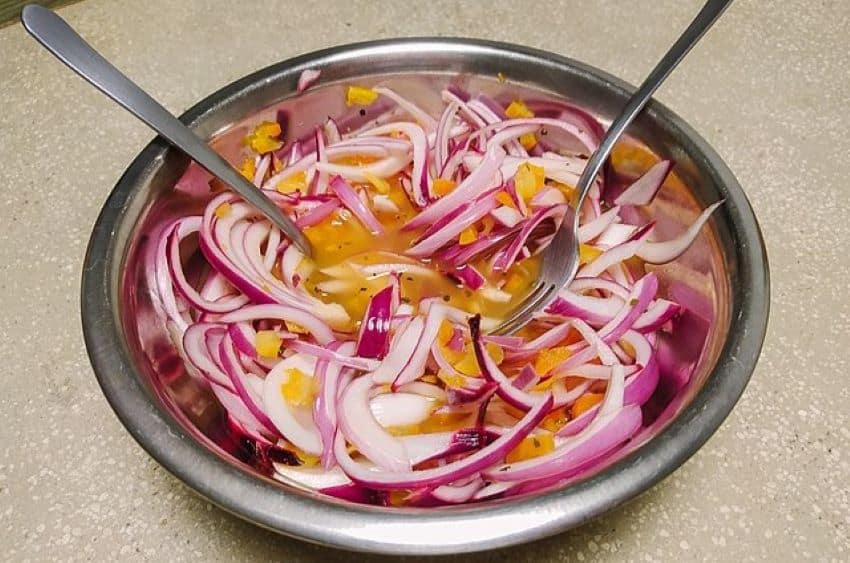
Habanero: According to the story, this chile originated in Cuba and became popular in the state of Yucatán, where it turned into the staple garnish of the cochinita pibil. It is also used in acidic salsas containing fruit like mango or tamarind.
As the spiciest chile in Mexico, a salsa negra (made of burnt onion and habanero without seeds) is a safe method to try habanero, as it reduces the chile’s spiciness and enables you to taste its flavor.
Spiciness: 🌶️🌶️🌶️
Dried chiles
Ancho: This chile is the dried version of the poblano pepper. The drying process gives it a smoky, earthy, and slightly sweet flavor, making it perfect for marinades and sauces like mole.
Spiciness: 🌶️
Guajillo: This is the dried version of the mirasol chile, a deep red chile about ten centimeters long. Once dry, the guajillo turns darker in color and becomes flat and hard. It is a bit spicier than a chile ancho or poblano and is used as the flavor base for enchiladas and chilaquiles.
It generally pairs well with any other dried chile.
Spiciness: 🌶️
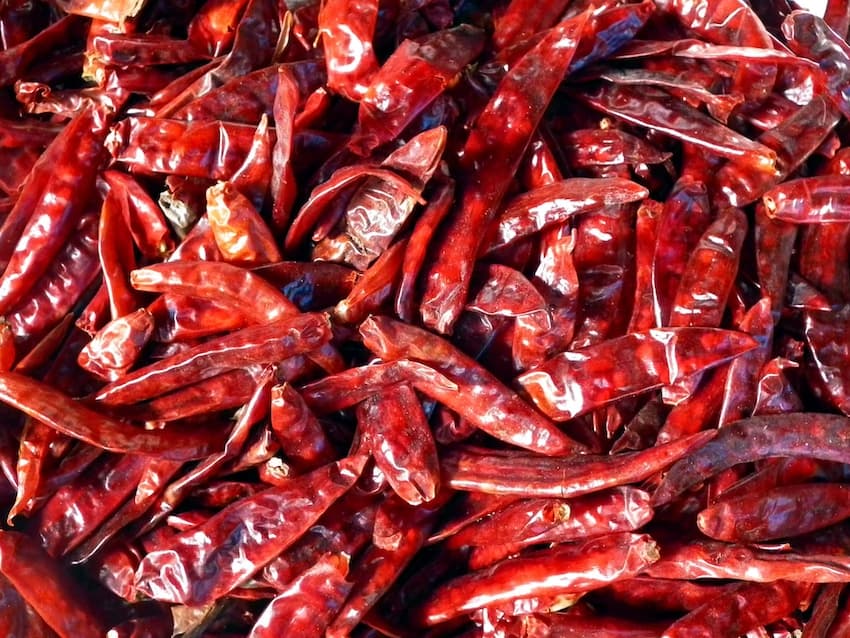
Chile de árbol: Although small and thin (5-7 cm long and 1 cm wide), this is a spicy chile. It is also used in enchiladas and chilaquiles to give them a spicy kick and is the flavor base of the salsa macha and salsa roja, used to garnish everything from tacos to enchiladas, sopes, huevos rancheros and even pozole.
Spiciness: 🌶️🌶️🌶️
Chipotle: This smokey kind of sweet chile is the dried version of a jalapeño pepper. Due to its smoky flavor, the Nahuatl called it chilpoctli, which means “smoked chile.”
The most popular form of dried chipotle is canned and prepared with adobo sauce. In this presentation, it is commonly used to add flavor to dishes like tinga de pollo, fideo seco, and sauces that accompany chicken.
Spiciness: 🌶️🌶️🌶️
Pasilla: The second most popular dried chile in Mexico after chipotle, it is produced from the chilaca pepper, which is similar in appearance to the poblano but thinner. Its name translates to “little raisin” due to its dark wrinkly skin and a deeply sweet dried-fruit flavor. It is often found in mole and is the staple ingredient of the pasilla sauce, one of the most common sauces in any Mexican restaurant or fonda.
Dried chiles are best stored in a sealed glass container at room temperature.
Spiciness: 🌶️
Pro tip: If you ever find yourself overwhelmed by spiciness, remember that a glass of milk, a spoonful of crema fresca, or a big slice of cheese can alleviate the discomfort. Water is not enough!
Gabriela Solís is a Mexican lawyer based in Dubai turned full-time writer. She covers business, culture, lifestyle and travel for Mexico News Daily. You can follow her life in Dubai in her blog Dunas y Palmeras.
